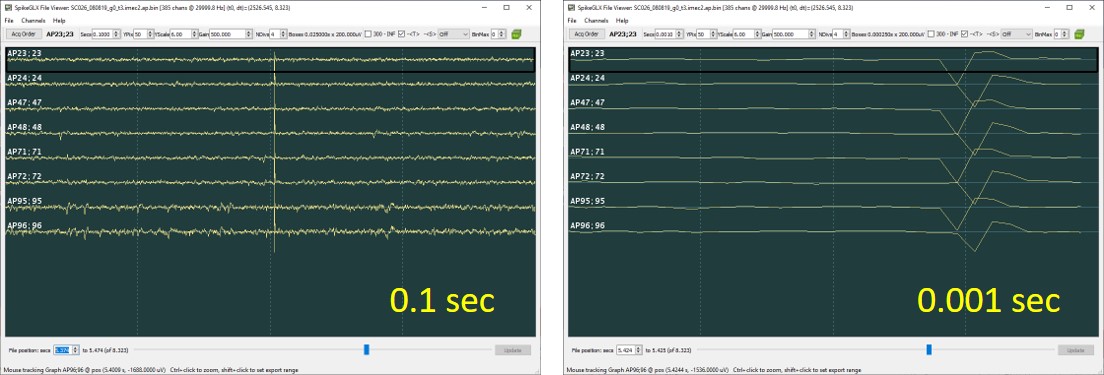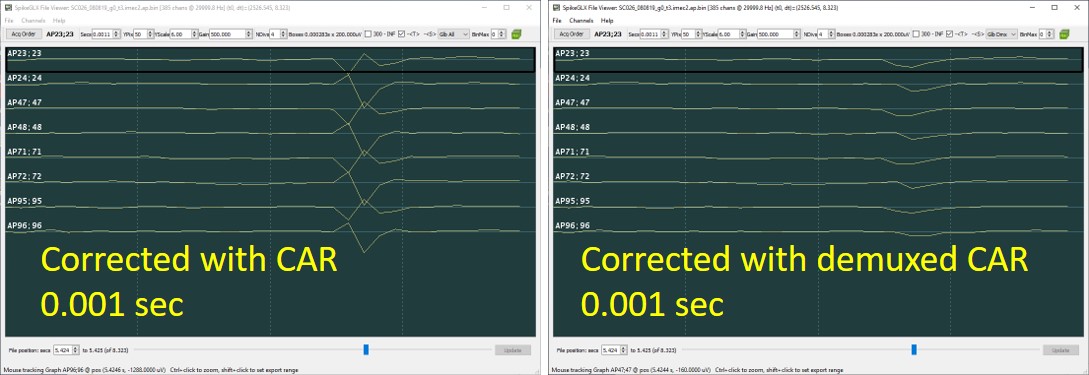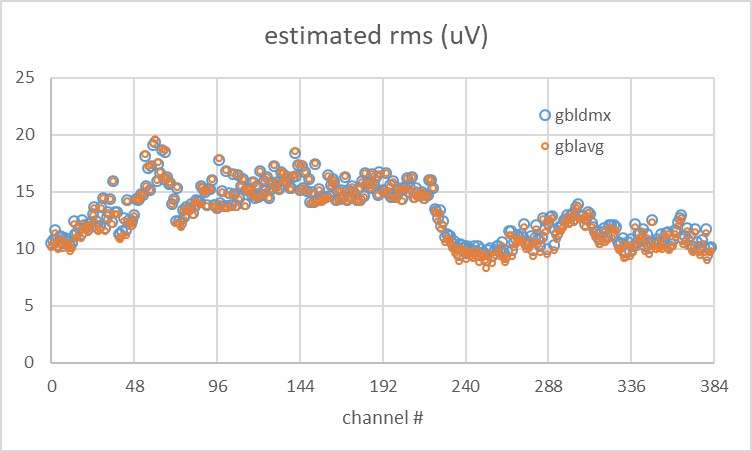CatGT: Global Demuxed CAR
How it works
The -gbldmx option in CatGT applies the same global demux filter available in the SpikeGLX user interface. This option performs a modified form of common average referencing, which takes account of the fact that the channels in a Neuropixels probe are not all sampled simultaneously. Rather, the channels are split into multiplexed groups, and one channel from each group is sampled at each tick of the multiplexed data rate. Gbldmx performs CAR on subsets of channels that are sampled concurrently.
The variation in sampling time can only be seen in very fast transients, for example licking artifacts:

Compare to standard CAR
Global average referencing (CAR), which subtracts the average of all channels from each individual channel, does a poor job at correcting these very fast transients because the signal is different for channels sampled at different times. The following figure compares standard and demuxed CAR:

RMS noise issues
A potential downside of gbldmx vs. standard CAR is that the calculated correction is averaged over fewer channels, and therefore more prone to noise. However, the differences in estimated rms between the two techniques are very small. Below is example data showing estimated rms vs. channel from a Neuropixels 1.0 probe in mouse thalamus.

Editing with gfix vs filtering with gbldmx
Global averaging with demux is valuable when the data contain artifacts with very fast transients. Such artifacts can also be corrected with CatGT's -gfix option. This cuts fast transients out and replaces them with zeros so the time span of the data is preserved.
This option is specified, for example, as follows: -gfix=0.40,0.10,0.02.
This requires that a transient artifact must attain a peak amplitude of at
least ||0.40 mV||, must reach its peak as least as rapidly as ||0.1mV/sample-tick||,
and the transient is over when the amplitude settles back to ||0.02 mV|| or smaller.
These values are easy to read by inspecting examples with the SpikeGLX FileViewer.
Furthermore, within each demux group, at least 25% of the channels must show a transient with these characteristics. Such timepoints are flagged. After all other filtering has been applied, the data are edited to replace the artifact span with zeros in all channels.
It does make sense to use -gfix and -gbldmx options together. Editing removes extreme artifacts completely, while demuxed CAR removes common background noise at all timepoints, not just at extrema.

Case for CAR?
In data that do not contain such artifacts, a user may wish to simply apply the CAR filter implemented in spike sorting programs. This might be a simpler workflow if CatGT isn't playing any other role, such as trial concatenation or event extraction.
What about LFP?
Neither CAR nor demuxed CAR are recommended when analyzing low freqencies. The LFP varies slowly over the whole shank, making distant channels a bad reference for correcting noise.
fin